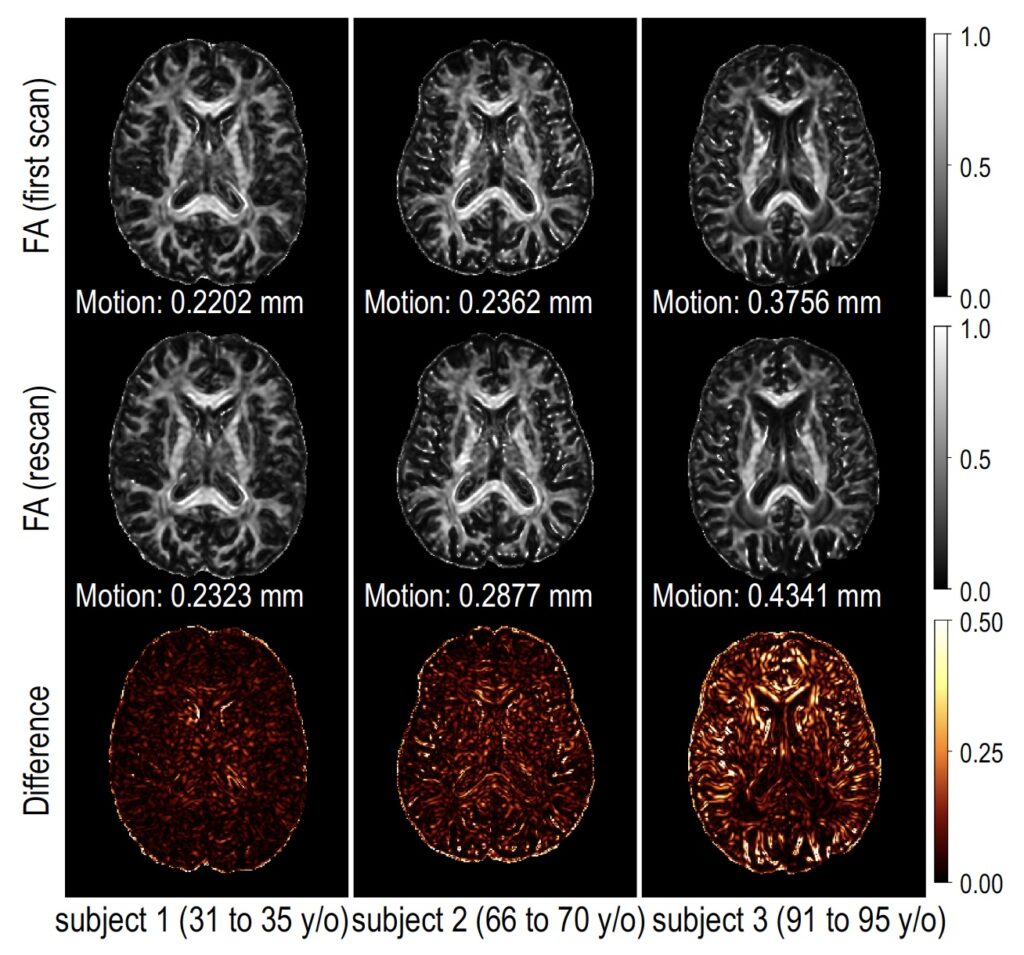Gao, Chenyu, Yang, Qi, Kim, Michael E., Khairi, Nazirah Mohd, Cai, Leon Y., Newlin, Nancy R., Kanakaraj, Praitayini, Remedios, Lucas W., Krishnan, Aravind R., Yu, Xin, Yao, Tianyuan, & Zhang, Panpan. (2024). Characterizing patterns of diffusion tensor imaging variance in aging brains. Journal of Medical Imaging, 11(4), 044007. https://doi.org/10.1117/1.JMI.11.4.044007
This study investigates the variability in diffusion tensor imaging (DTI) data, particularly when data are merged from multiple sites, which is crucial for large-scale analyses. DTI measures can be affected by spatially varying and correlated noise, making it important to understand how different factors—like physiology, subject behavior, and scanner interaction—impact the reliability of the results. The researchers focused on characterizing the sources of variance in DTI metrics in different brain regions to improve the accuracy of future analyses.
Using data from 1,035 subjects, aged 22 to 103, in the Baltimore Longitudinal Study of Aging, the study analyzed how DTI variance changes over time and across multiple factors. Each subject had up to 12 longitudinal DTI scans, and the authors examined how factors such as age, scan interval, motion, sex, and session order affected DTI variance in different regions of the brain. They found that the impact of these factors was complex and varied across regions. For example, the time between scans was associated with increased variance in some areas (like the cuneus and occipital gyrus) but decreased variance in others (such as the caudate nucleus). Additionally, males showed higher variability in specific regions, and head motion had a mixed impact on DTI variance across different regions.
The findings highlight the need for researchers to consider the variability in DTI metrics when analyzing data and planning studies. By accounting for these regional variations in variability, researchers can improve the accuracy and reliability of DTI-based analyses, especially in large, multi-site studies. This work also emphasizes the importance of including variance estimates in data sharing to enhance the quality of future research.

acquired within the same imaging session) in DTI scalar images, such as FA images, generally
increases with age. (Subjects’ ages are grouped into 5-year bins to respect privacy.) But motion is
also considered to increase with age.26,27 We would like to know the following: Which factor is
associated with DTI variance? Where and how does this association manifest?